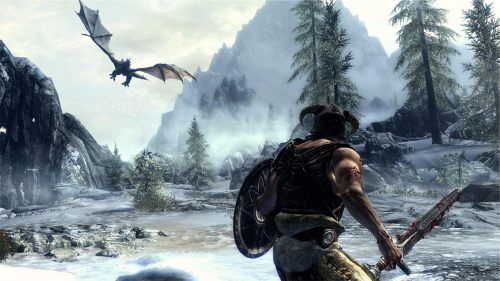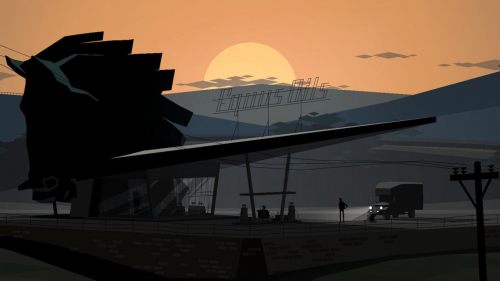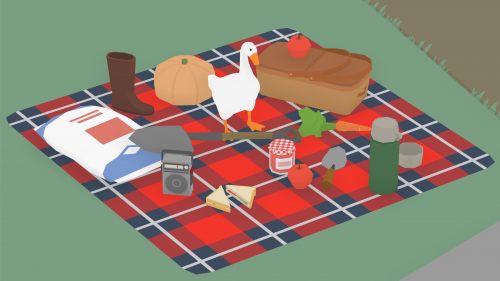THE OUTER WORLDS Game Review: Peak Role-Playing Takes On Peak Capitalism
Do you know how hard it is to write a role-playing game? The number of overlapping storylines, the variety of play contingencies, the sheer volume of words required to create a believable world and characters? Obsidian Entertainment knows. The Fallout: New Vegas studio’s latest release The Outer Worlds comes with a serious pedigree, launching a new IP with something to prove. And oh, how it proves itself.
The Outer Worlds takes place a couple hundred years from now, in a future where humanity has scattered to terraformed exoplanets - and surrendered to the domination of corporations. You’re a crewmember of a long-lost colony ship, recently defrosted by a Doc Brown-type scientist, and it’s up to you to rescue the rest of your crew - and/or to secure a place on the corporate ladder. The Outer Worlds is a dystopian view of capitalism run amok, but it's also by turns sad, heartwarming, and hilarious. It might not be the most technologically advanced RPG out there, but among AAA titles it’s quite possibly the G with the most R to P.
As its title suggests, The Outer Worlds is not set in a vast single environment, but rather several mid-to-large sized ones, accessible via a Mass Effect-y galaxy map. The Halcyon Colonies are a Wild West in space, and they feel it. You’ll visit hastily-terraformed, sulfur-smelling worlds, industrial wastelands, high-class paradises, space stations, asteroids, and more, each of which is packed with stories and characters to interact with. The moment-to-moment gameplay will feel familiar to players of Bethesda’s RPGs, though missing some of those games’ engine quirks (and introducing some of its own). You romp through environments, talking to characters, defeating enemies, and looting everything that isn’t nailed down, progressing multiple questlines toward your ultimate goal. Multiple corporations vie for your loyalty, and you can work for all, some, or none of them. Your choice.
Obsidian's writing and quest design has always been its calling card, and in The Outer Worlds the studio has delivered a gargantuan amount of well-written, character-driven dialogue, with conversation options that stretch far beyond the standard paragon/renegade diametric. You can play brave, thoughtful, selfish, cowardly, mean, clever, or outright stupid if you want, via dialogue options as impactful as they are hilarious. Using upgradeable skills of persuasion, intimidation, inspiration, and deceit, most conflicts can be resolved without violence; many quests take entirely different routes depending on your decisions. Conversation is also central to interacting with your six AI companions, who each contribute to your quests and abilities, whilst offering their own unique storylined. Whether you’re helping your companions confront their demons, reconnect with their parents, or engage in a first romance, these quests are all about relationships, and even the characters who enter the story as archetypes become more interesting as the game progresses. A queer, asexual love story is a particularly adorable highlight. So good is the narrative design in general that the few weak spots stick out all the more glaringly. But even the lesser quests have some degree of narrative inventiveness - no procedurally-generated "radiant" quests here.
Talking your way out of fights isn't the only way to play. Buildcrafting is a bigger deal here than in, say, Fallout 4 - not so much because there are more options as because non-combat builds are simply more viable. Between a multitude of character stats, perks, and weapon and armour mods, you can build a skilled hacker, a smooth talker, a stealthy thief, or a bludgeoning berserker. Taking a page from the likes of Darkest Dungeon, repeated traumas will present the option of taking on a "flaw" - a phobia or weakness that permanently docks your core stats - in exchange for a perk point to spend. Companions only expand the possibilities, and gadgets like a temporary holographic disguise add extra depth and suspense to certain situations.
Of all the interlocking systems in The Outer Worlds, combat is surely the least effective. It isn’t that the combat is bad, per se. Guns feel decent, there’s a wide range of bizarre “science weapons” to collect, and Obsidian’s answer to Fallout’s “V.A.T.S,” called Tactical Time Dilation, makes you feel like John Wick in space. It’s just repetitive, is all, thanks to limited enemy types and an implausibly regular rhythm of combat encounters. Making matters worse, the ammo and item economy - at least on regular difficulty - is generous enough to render most encounters trivial by mid-game. It doesn't take before, as in something like Destiny, you end up dismantling everything you find for parts. Consumables are similar; this is yet another RPG where you’ll finish the game with an enormous hoard of health packs and amusingly-named boost items. Difficulty levels include a full-blown survival mode, though, so experienced players should ramp it up for a challenge.
With its BioShock-meets-Fallout-meets-Douglas-Adams sense of satire sloshed all over its marketing, it's no surprise that The Outer Worlds comes with a serious anticapitalist attitude and some of the most genuinely funny writing in AAA games. One of the game’s first conversations sees a gravedigger bemoaning the presence of not just cannibals, but “worse - unemployed cannibals,” which is pretty demonstrative of the tone for the whole game. Obsidian pokes at everything from bureaucracy and marketing to industrial espionage and corporate malfeasance, creating a post-Earth capitalism that honestly isn’t entirely removed from the present day (except for the shrink rays). Breakfast cereal companies engage in gruesome biological experiments. The cosmetic dental surgery industry is fiercely competitive. A character’s suicide is scorned as vandalism to company property. Obsidian claims the game doesn’t push the player towards any particular ideology, and while that’s true - many tough decisions will bring you to unexpected moral compromises - the writing staff clearly took delight in twisting a knife in the side of capitalism.
In order to focus on its strengths, Obsidian clearly made a trade-off in The Outer Worlds' technical presentation. Graphically, the game sits slightly below Fallout 4 on the totem pole, its amusing visual design done a disservice by poor draw distances and rough procedural animation. Audio, too, sounds compressed in quality, likely a key reason behind the game's surprisingly light download size. And you'll find yourself looking at loading screens quite a bit as you trek between planets and fast-travel points. None of this is enough to undercut the game's charms, and I found the game surprisingly free of bugs, but you won't be using The Outer Worlds to demo your sick new graphics card. That's just not this game's focus. There are other games for that.
Coming from masters of the form Obsidian, The Outer Worlds was always going to be a good time, but in a gaming landscape that prioritises sizzle over storytelling, its role-play heavy approach still refreshes. The Outer Worlds is genuinely funny and absolutely enthralling, and though its influences are clear, it still manages to tell an original story. In games like these, I tend to abandon repetitive side quests by about mid-game, choosing instead to speed through the more-bespoke main storyline. But The Outer Worlds’ side, faction, and companion quests are so uncommonly rich and engrossing, I ended up seeing up pretty much all of them to their conclusions. I can't think of a better recommendation than that.



